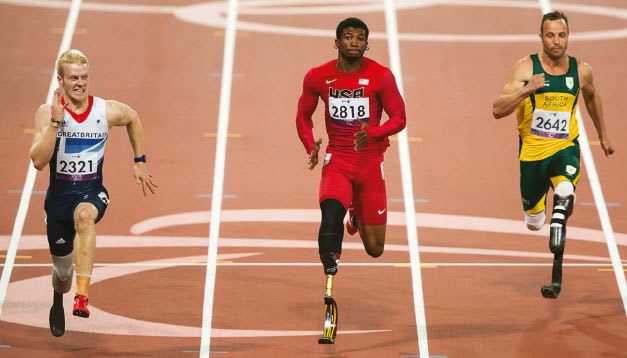At London’s Paralympic Games in September, USA track and field star Richard Browne took the silver medal in the highly anticipated 100-meter race for below-the-knee amputees. The 21-year-old was the first athlete to train with and compete with the Catapult® Running Foot from his sponsor Freedom Innovations, LLC, Irvine, CA, at a Paralympic Games.

Browne raced against favored world record-holder Jonnie Peacock of Great Britain and defending Paralympic champion Oscar Pistorius, the South African double amputee sprinter who also competed in the 2012 able-bodied Olympic Games. Peacock took gold with 10.90 seconds, and newcomer Browne won silver with a personal-best time of 11.03. Single and double below-the-knee amputees race against each other in world competitions because there are not enough sprinters in each category with qualifying standards. (See Figure 1)
While Peacock and Pistorius use Össur carbon fiber running blades, Browne believes that his chosen blade technology provides him with unique benefits. “The Catapult design is completely different than what my competitors use,” he stated. “This design has helped me to shave off time throughout the year and ultimately propelled me to a silver medal for Team USA.”
In a race like the 100-meter dash where a tenth of a second is critical, Browne, a below-the-knee amputee due to a traumatic accident in 2009, says he tried a variety of running prosthetic foot products before determining the most energy efficient choice for him.

Generally speaking, prosthetic feet act like a spring, so if a member is added in parallel to a foot with a typical loading curve, the net force deflection curve of both members acting together affect the shape of the curve. (See Figure 2)
What is different about the Catapult is that Freedom Innovations added a beam, with a slight curvature, as a cross member. When this beam, called the PowerSpring, is axially loaded, it has a stiffness curve where a small amount of deflection requires a large load. But, once the PowerSpring starts bowing out, the load curve rolls over, levels off gradually, increasing in load as the displacement continues to increase. When added to the load displacement curve of the primary c-shaped spring, this creates an initial “knee” in the load curve. This characteristic causes the net load displacement curve to initially invert, increasing the net energy stored by the foot, and ultimately increasing the energy returned by up to 30 percent.
This article was supplied by Freedom Innovations, LLC, Irvine, CA. For more information, Click Here



